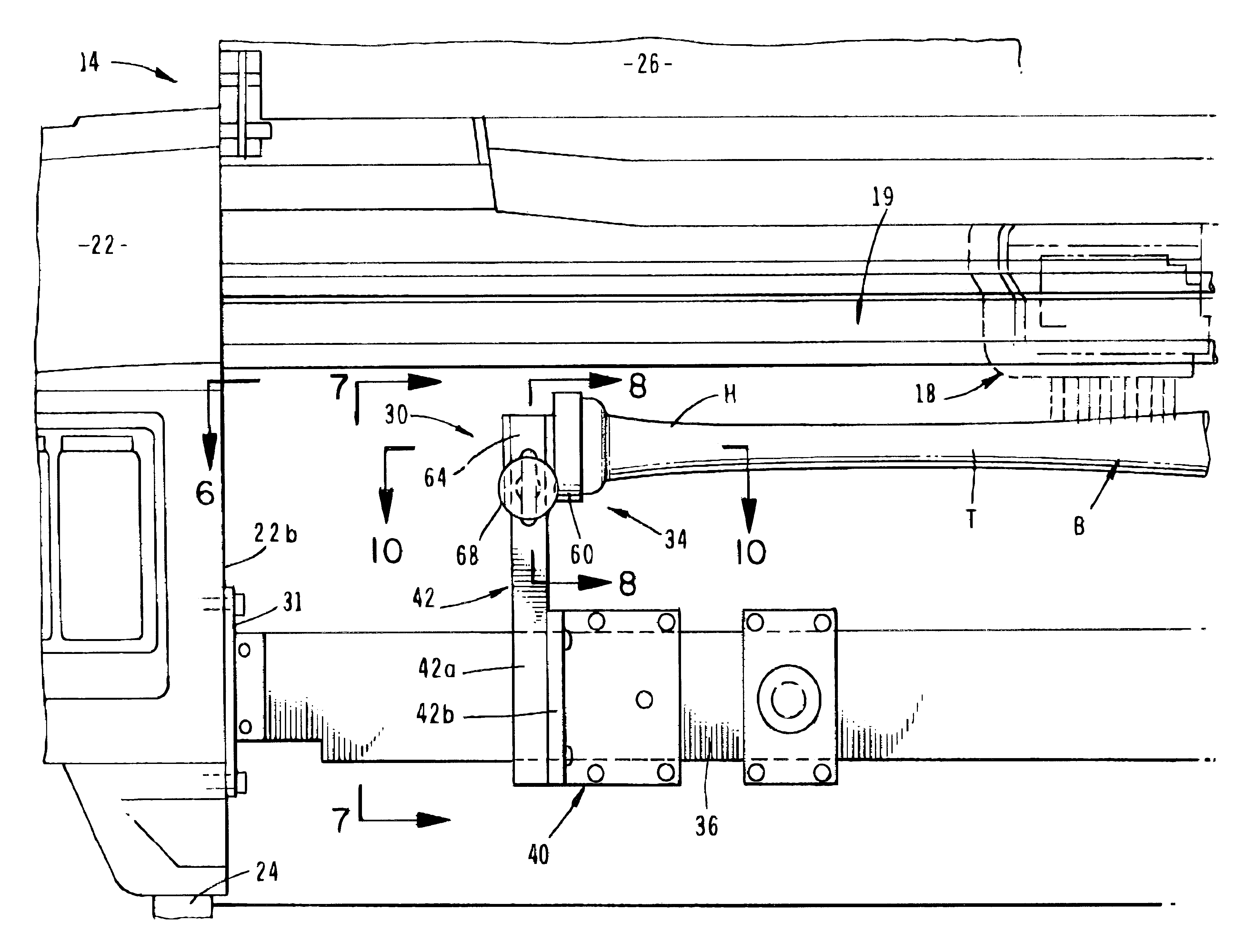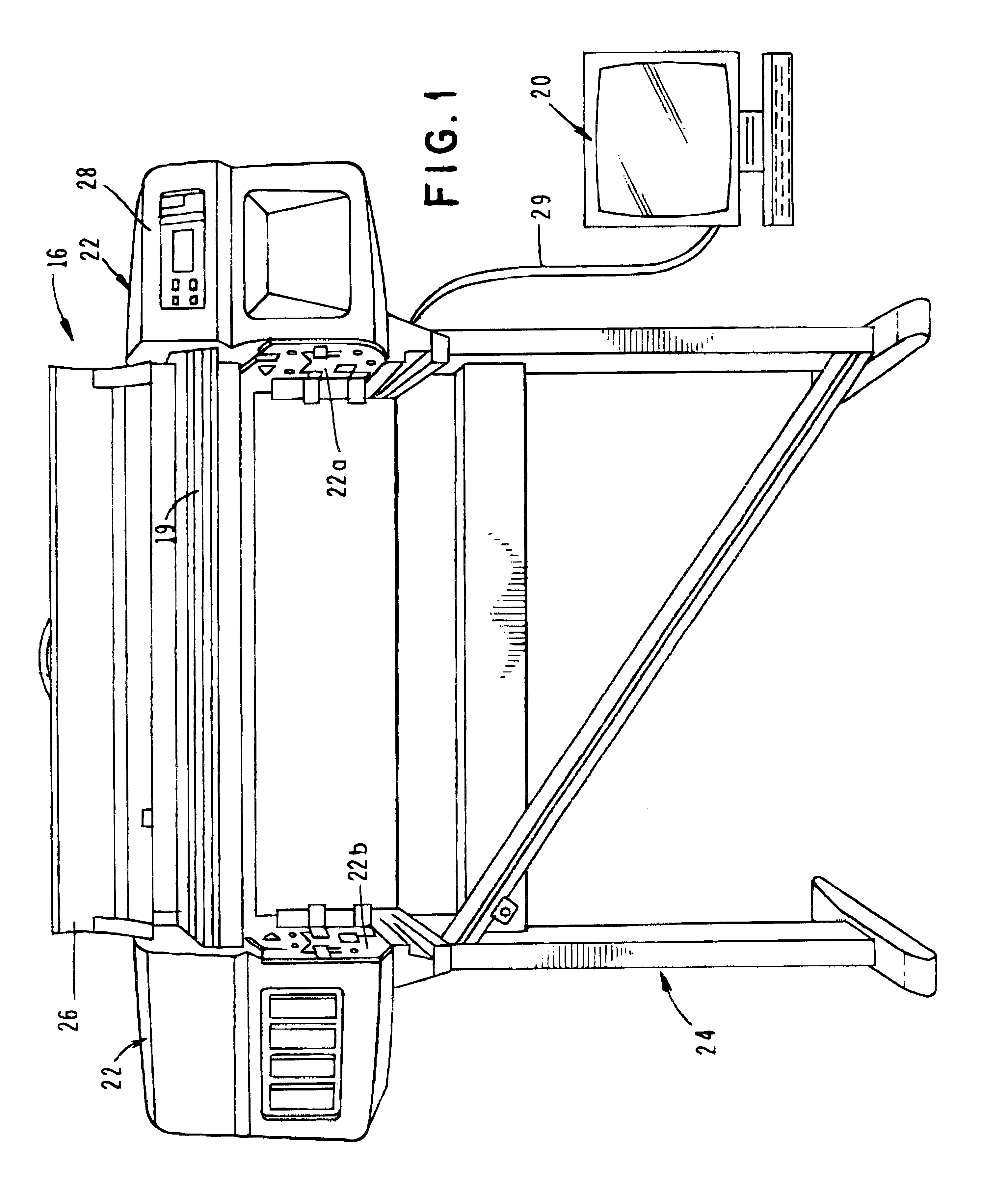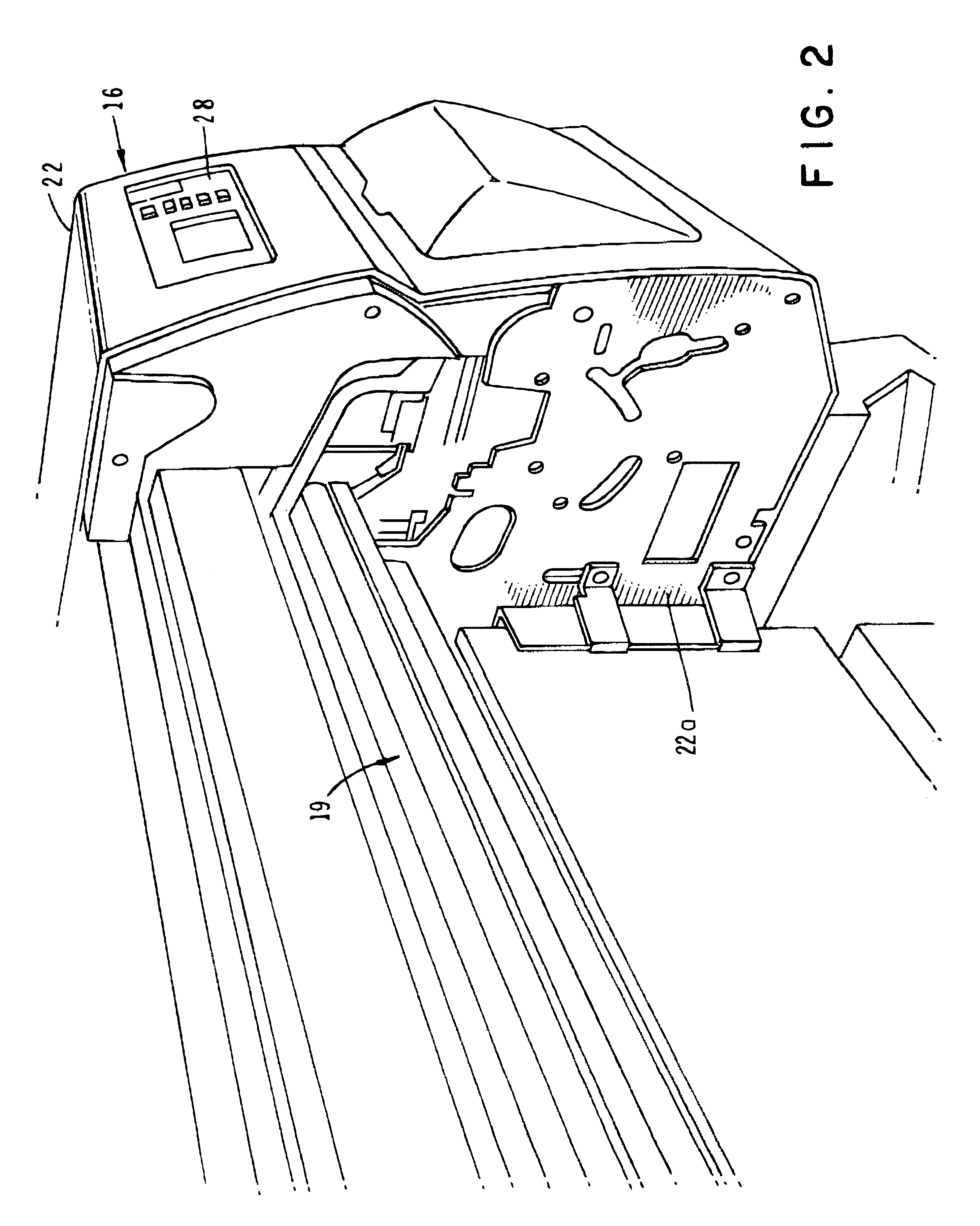Methods and apparatus for image transfer to non-planar surfaces
a technology of non-planar surfaces and methods, applied in the direction of transportation and packaging, manufacturing tools, packaging goods types, etc., can solve the problems of low quality of technique, large drawbacks of sublimation processes, and general limitation of printing on smooth, flat surfaces
- Summary
- Abstract
- Description
- Claims
- Application Information
AI Technical Summary
Benefits of technology
Problems solved by technology
Method used
Image
Examples
Embodiment Construction
Referring to the drawings and particularly to FIGS. 3 and 3A, one form of the apparatus of the invention for imprinting a predetermined image or pattern on a three-dimensional article is there illustrated and generally designated by the numeral 14. The apparatus of this form of the invention is made up of two main components, one being a modified, commercially available type of microprocessor based, ink jet printer (FIGS. 1 and 2) and the other comprising positioning means for holding, positioning, and rotating the article to be imprinted within the printer at a location proximate the color ink jet print heads 18 of the modified printer 16 (FIG. 3). The primary modification made to the commercial printer involves the removal of the drive roller assemblies and their related drive mechanisms from the lower portion of the printer housing. Once this is accomplished the lower portion of the printer housing is open and has the configuration illustrated in FIG. 1 of the drawings.
While vari...
PUM
| Property | Measurement | Unit |
|---|---|---|
| length | aaaaa | aaaaa |
| distance | aaaaa | aaaaa |
| height | aaaaa | aaaaa |
Abstract
Description
Claims
Application Information
 Login to View More
Login to View More - R&D
- Intellectual Property
- Life Sciences
- Materials
- Tech Scout
- Unparalleled Data Quality
- Higher Quality Content
- 60% Fewer Hallucinations
Browse by: Latest US Patents, China's latest patents, Technical Efficacy Thesaurus, Application Domain, Technology Topic, Popular Technical Reports.
© 2025 PatSnap. All rights reserved.Legal|Privacy policy|Modern Slavery Act Transparency Statement|Sitemap|About US| Contact US: help@patsnap.com



